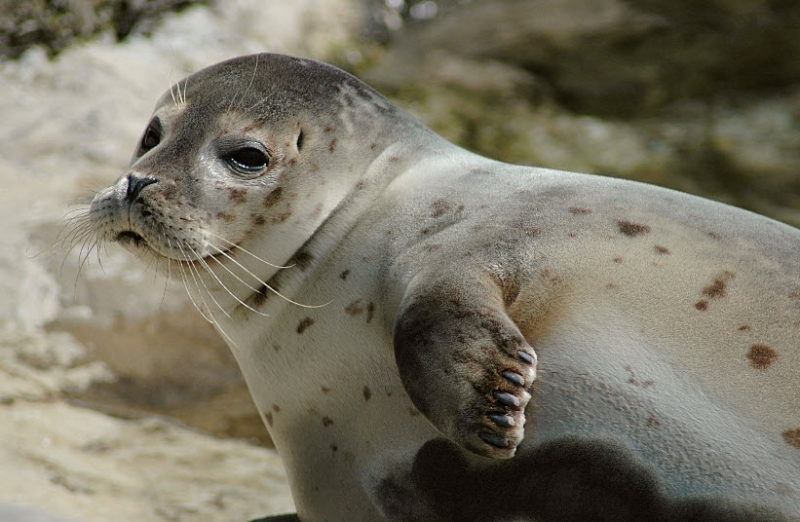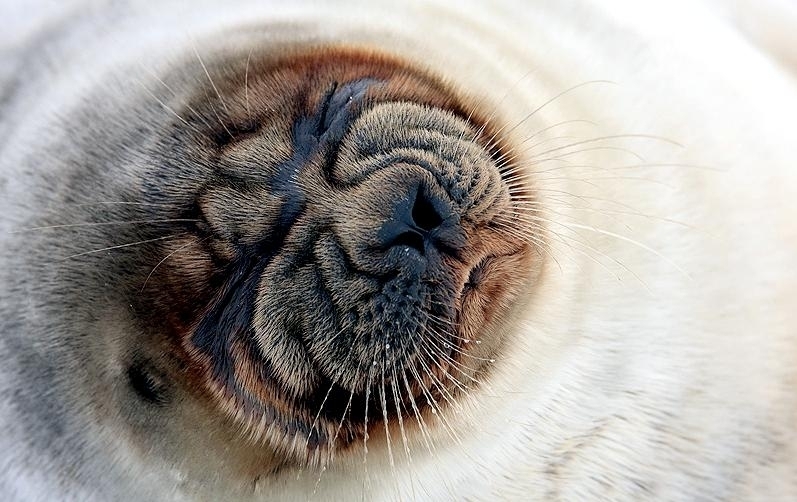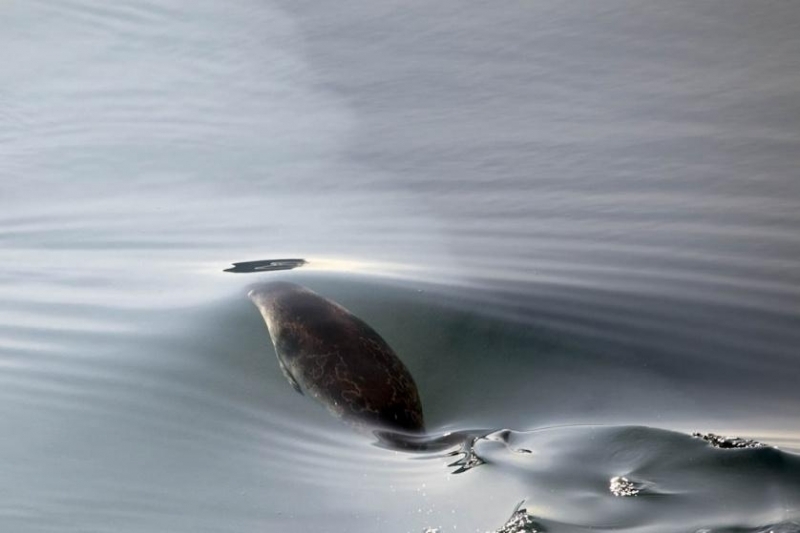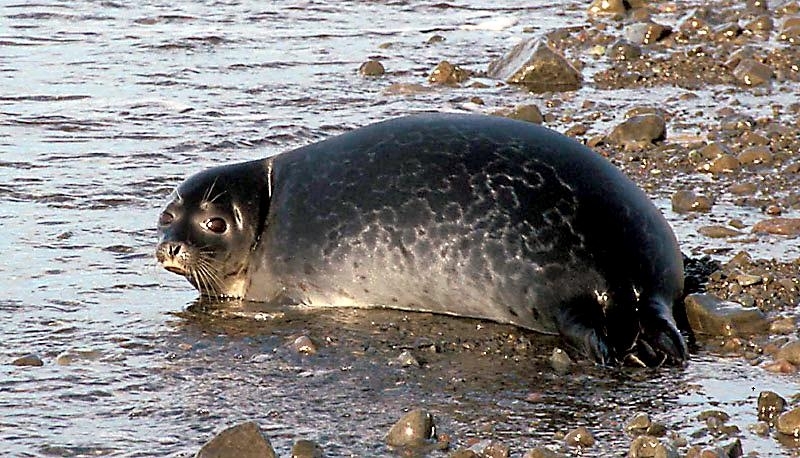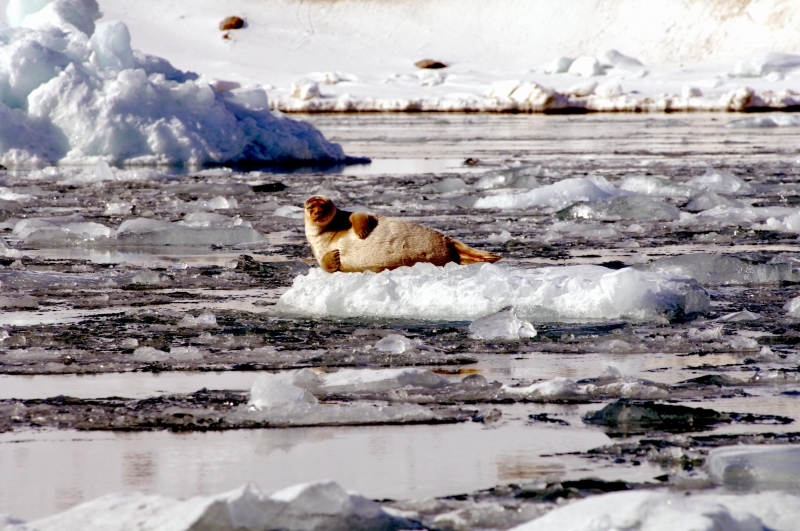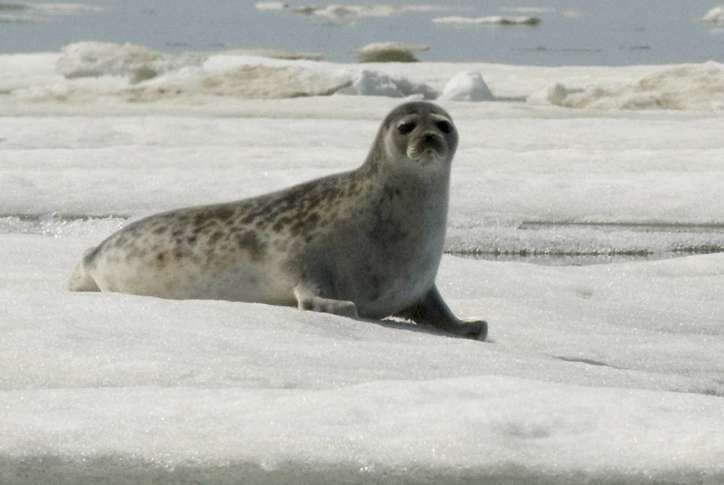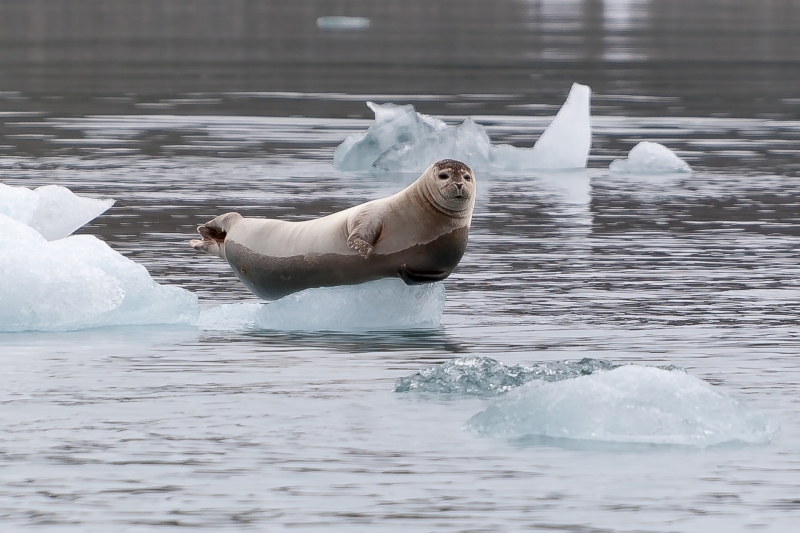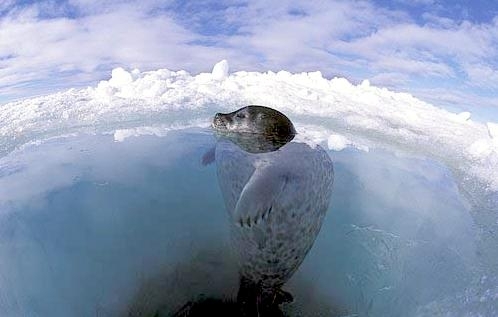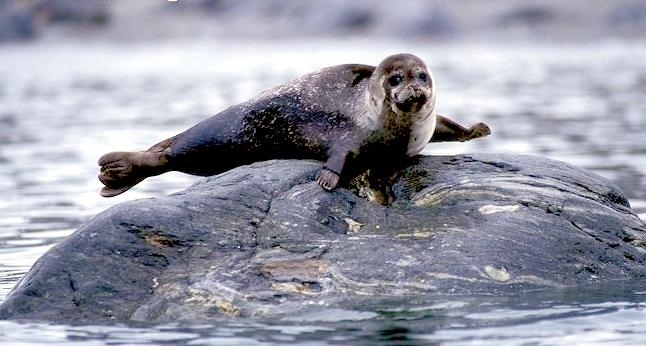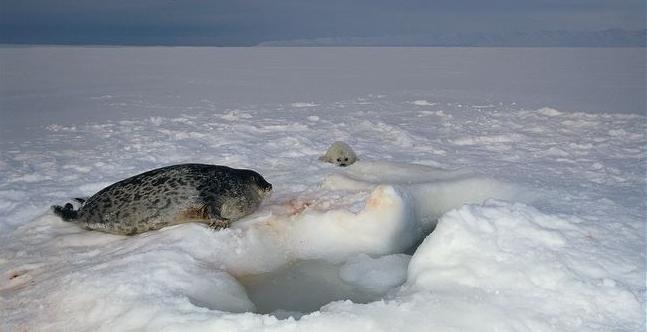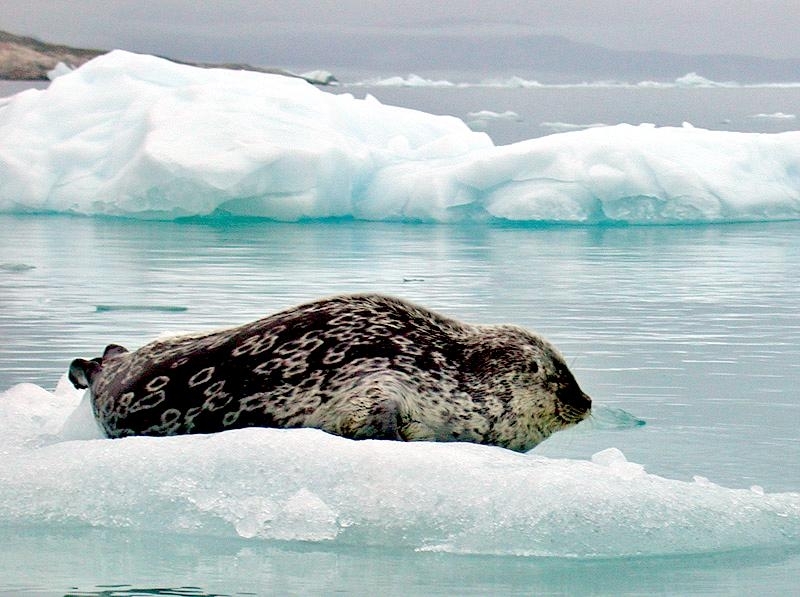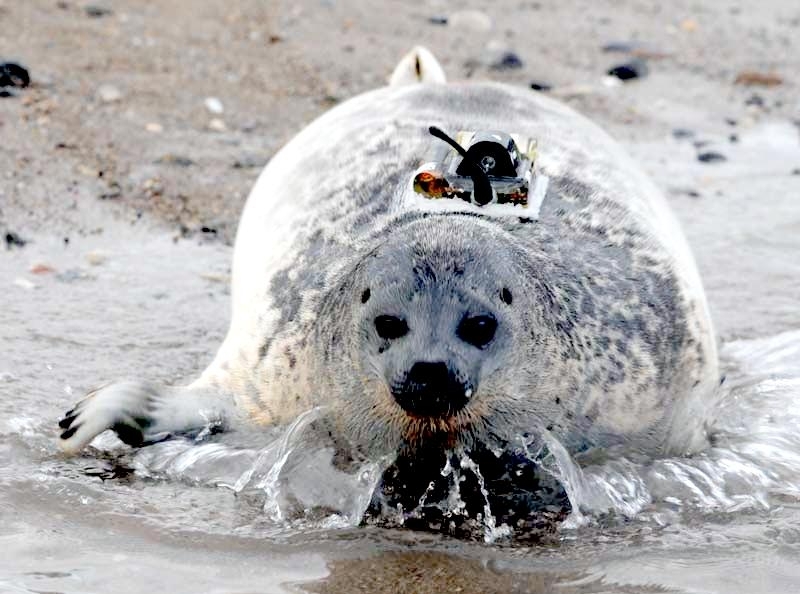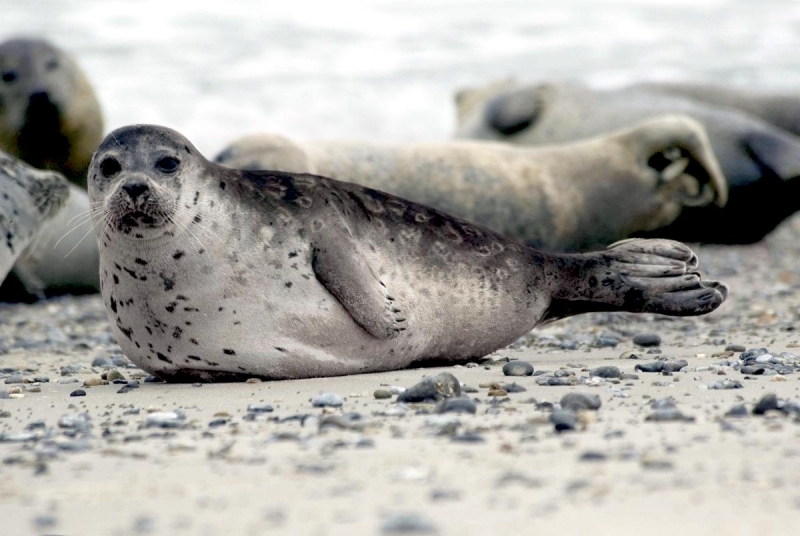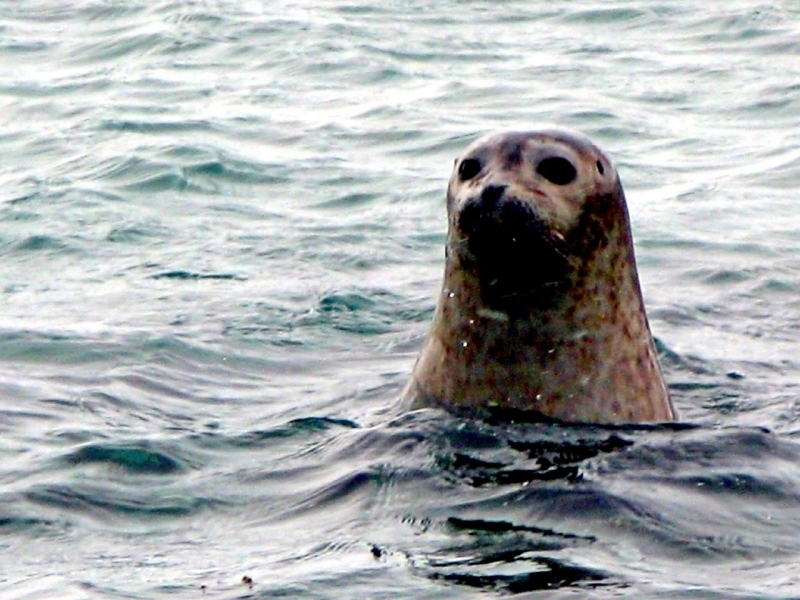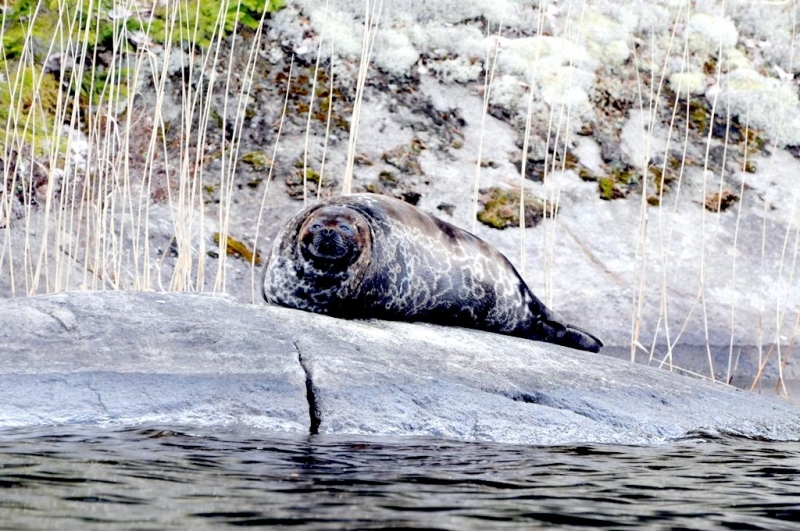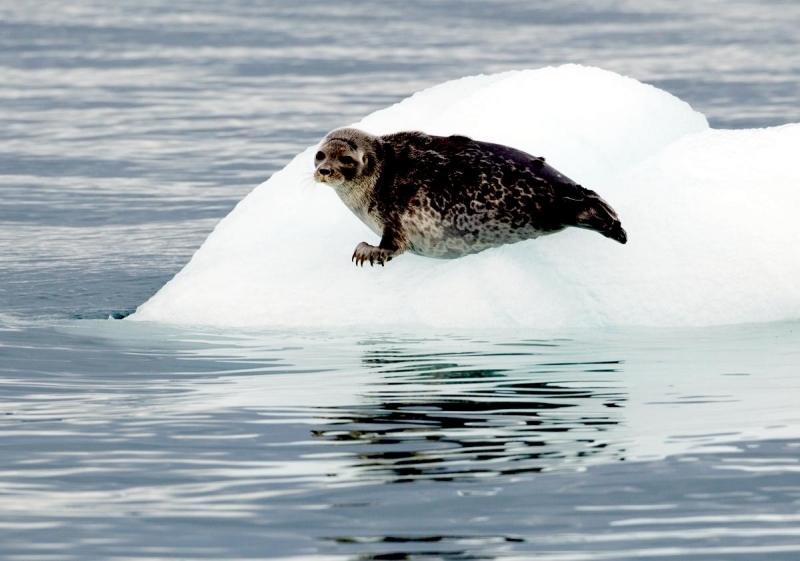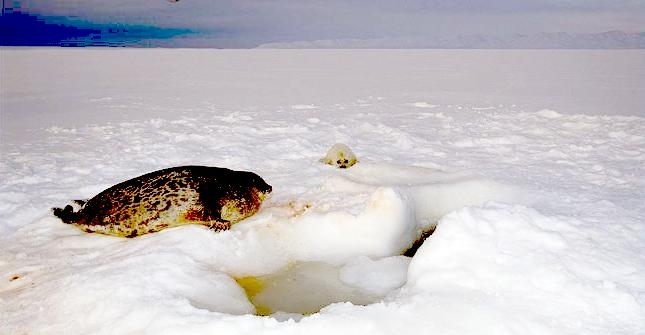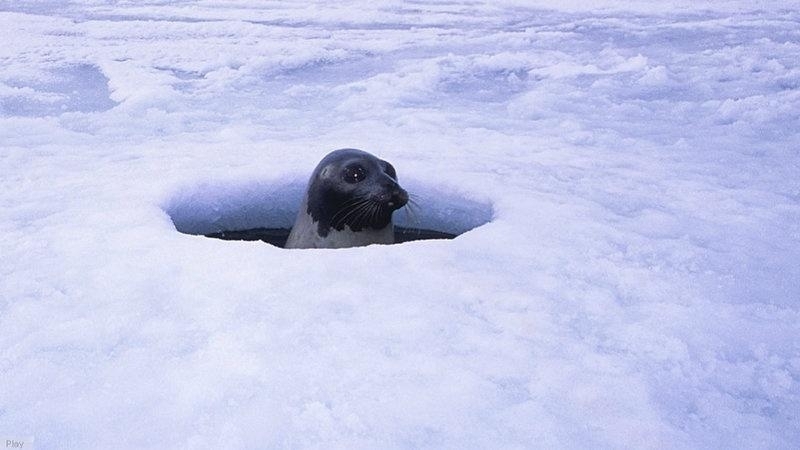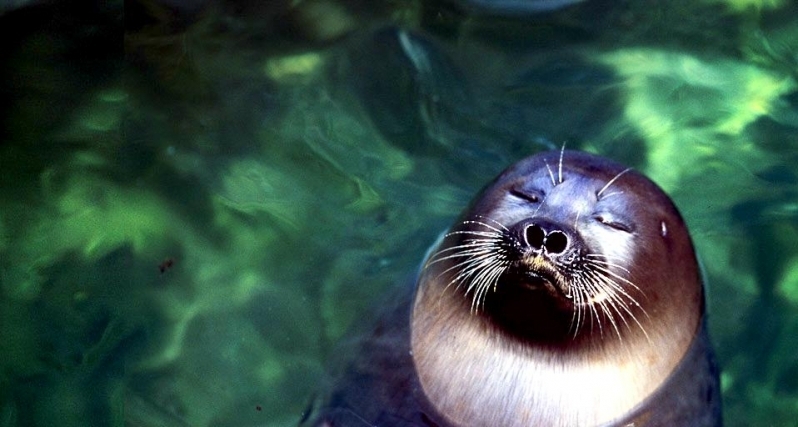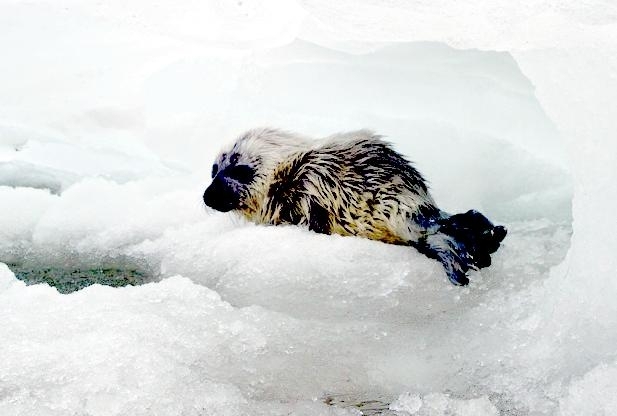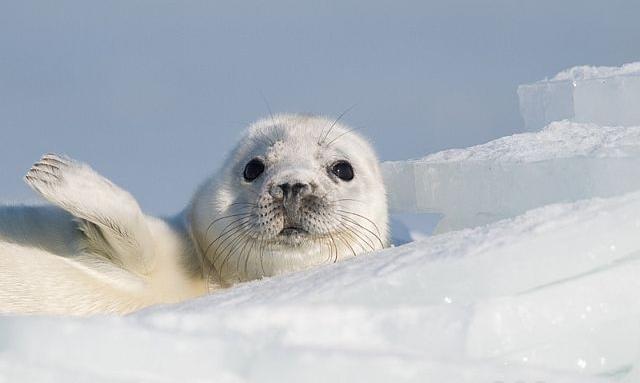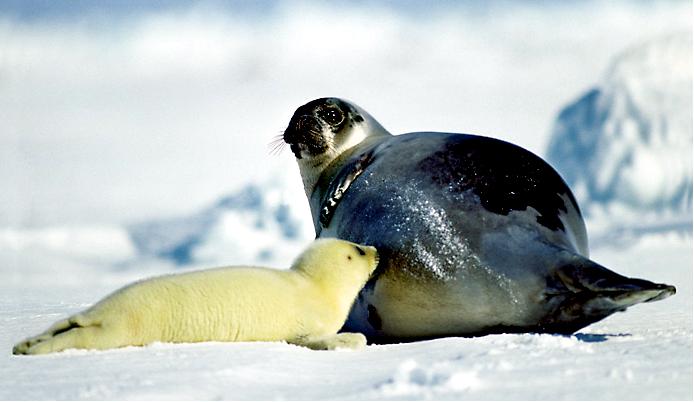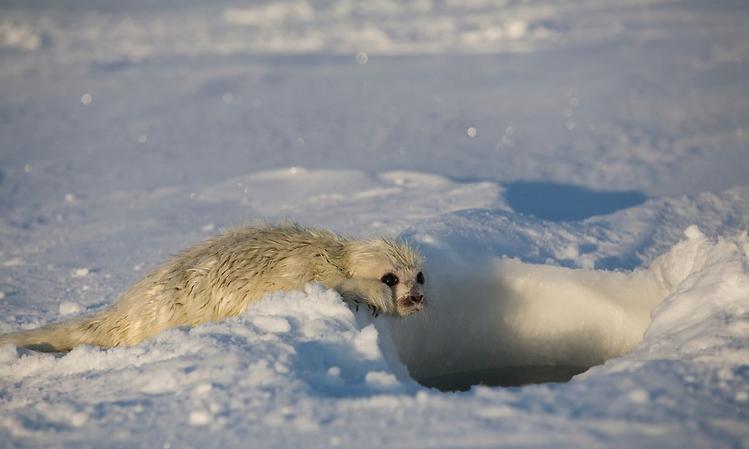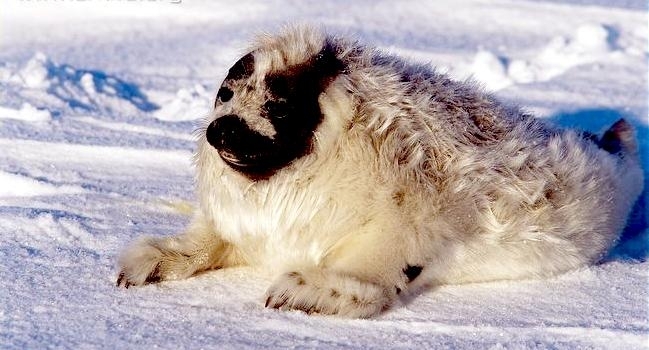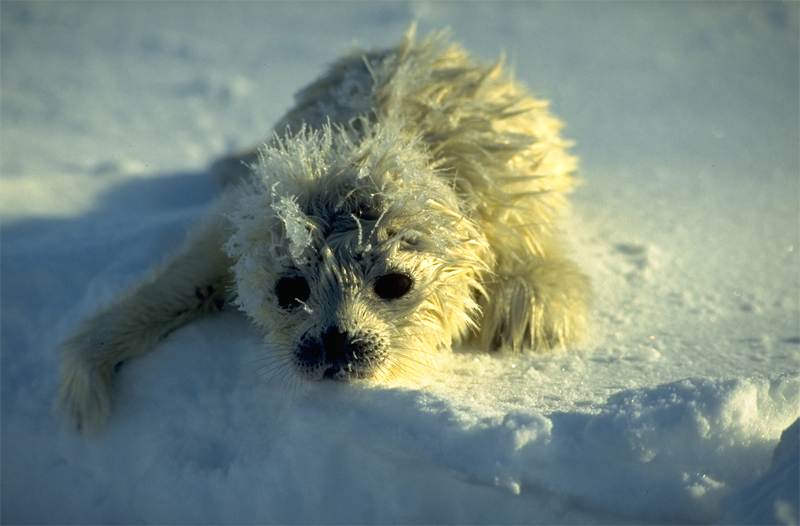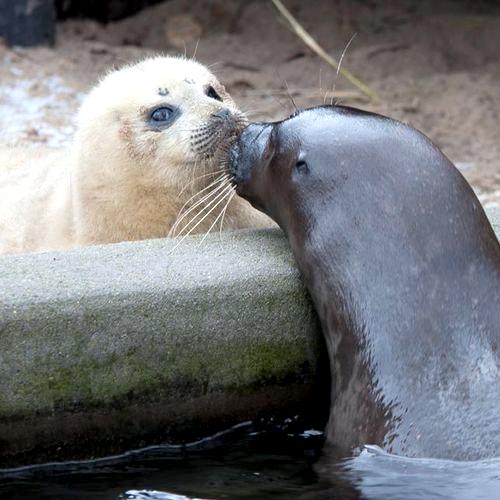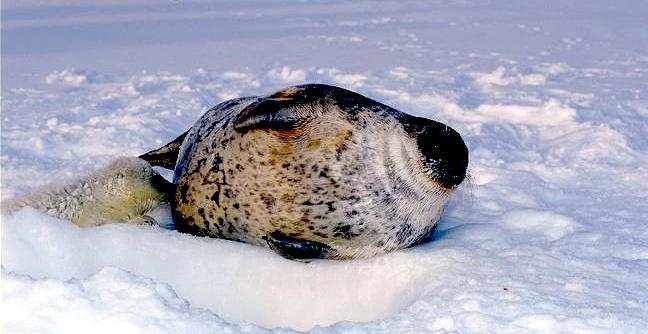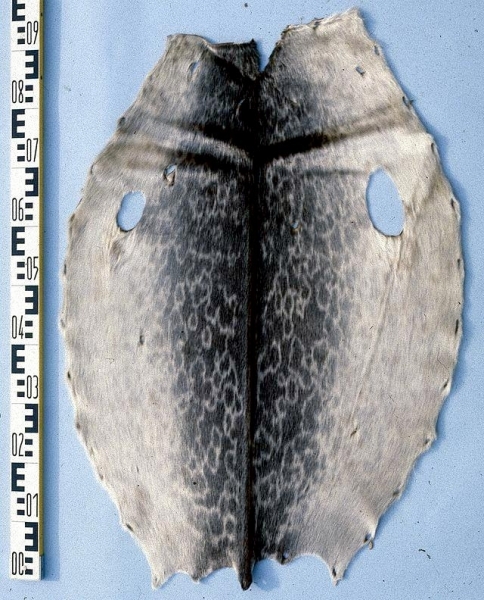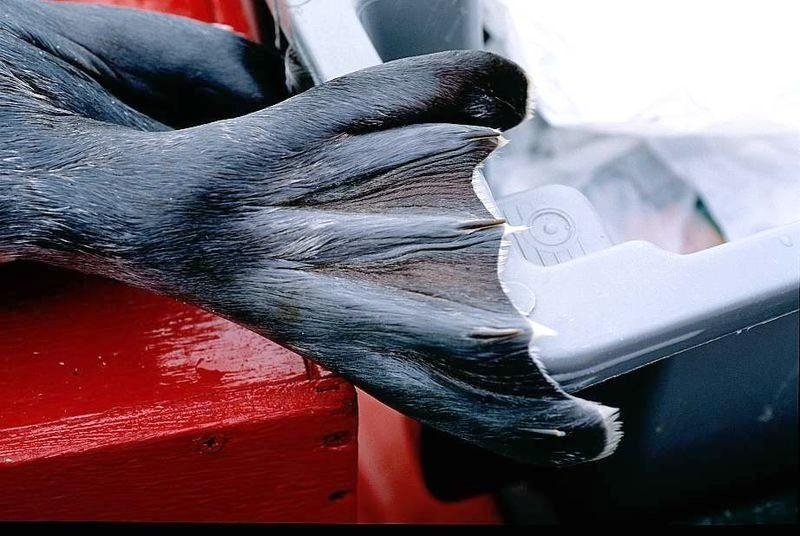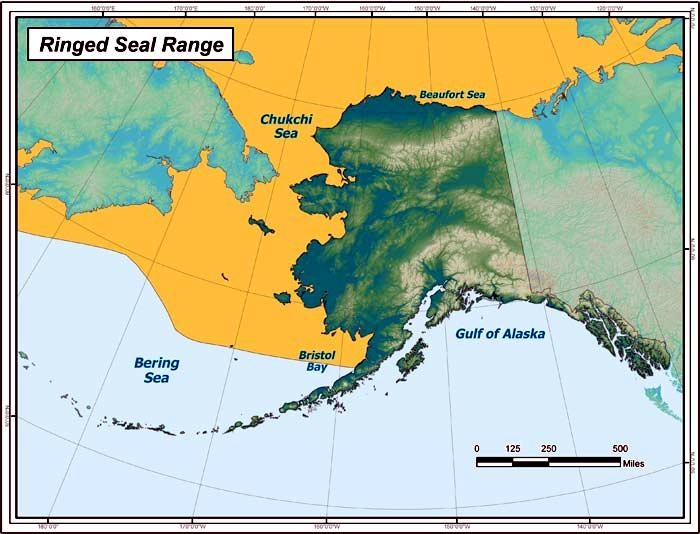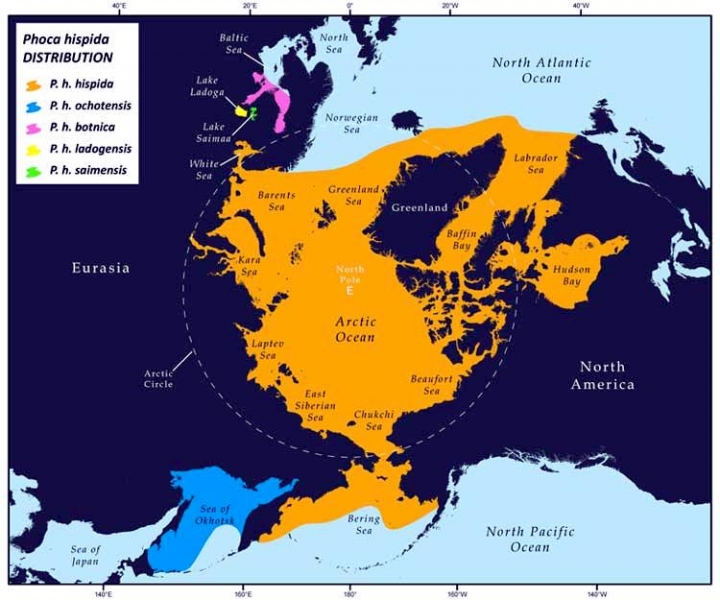“Pusa hispida”
Ringed Seals are the smallest seal species and get their name from the light-colored circular patterns that appear on their darker gray backs. Some of these markings are so dense, that they take on the look of splattered paint. The measurements of these subspecies vary greatly. These seals measure 1.1 to 1.5 meters in length and weigh 50 to 70 kilograms, males are slightly larger than females and these seals can live up to 43 years of age. Ringed Seals are the most common seal in the Arctic, found on firm ice along Pacific Japanese coasts, the northern parts of the Baltic Sea, Canada, Alaska and Siberia. Estimates of the Ringed Seal population are difficult due to this species wide distribution, however rough estimates put the population between 2 to 7 million seals. During the winter however the seals are found alone, spread out in the ice fields and are often aggressive to other individuals. Ringed Seals are also found alone rather than in groups, during the ice-free period in their region. During colder months when the cracks in the ice begin to freeze, Ringed Seals create breathing holes with their strong claws which they maintain throughout winter in ice up to 2 meters thick. Ringed Seals dig caves in the snow above the breathing holes forming multi-chambered lairs for protection from extreme cold and Polar Bear predation. These seals will typically maintain 2 or more lairs simultaneously up to 4.5 kilometers apart. Some Ringed Seals migrate on a seasonal basis in response to ice availability and there is evidence of long-distance migration and dispersion, particularly for juvenile Ringed Seals.
Ringed Seals feed from late summer to early spring on Saffron Cod, shrimp, amphipods and euphausiids. In the fall, Ringed Seals feed on Saffron Cod and winter to early spring mainly on Arctic Cod. The female reaches sexual maturity at about 6 years of age and generally bears 1 pup each year. Mating occurs in late April and early May. Males are likely polygamous and establish underwater territories. Although mating occurs in May, the embryo does not implant in the womb until August or September. The gestation period is approximately 240 days after which Ringed Seals are born on solid ice where they are vulnerable to predators such as bears, foxes and humans. Because of the risk of predators, Ringed Seal pups learn to dive when they are very young. Ringed Seal pups are born measuring 60 to 65 centimeters in length and weighing 4.5 to 5.5 kilograms. Females reach sexual maturity at 4 to 8 years, males at 5 to 7 years. They generally remain on drifting pack ice or shore-fast ice to rest, pup and molt. Most Ringed Seals breed and give birth in lairs formed in caves dug into the snow on top of the ice. Pups are generally born in mid-March to mid-April with a white coat that will be shed within 4 to 6 weeks for a silver coat with dark gray coloring on the dorsal side. They are nursed for 5 to 7 weeks during which time the mothers only feed occasionally and consequently lose a lot of their blubber. Ringed Seals also lose weight during molting season as they do not feed during this time.


